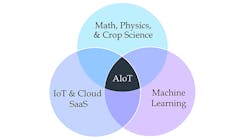I work with a municipality that has 16 sites for water treatment, as well as lift stations, water towers and the like. The square mileage is relatively large, and getting access to the sites is somewhat difficult.
We currently use a broadband solution in the unlicensed spectrum of Wi-Fi in the 5-MHz range. It has served us well so far, but since it is a line-of-sight solution I wonder about the reliability of the service in the next 10 years as trees grow. And devices in housing developments can use the infrastructure for personal and business Internet access.
The argument over whether Internet access should be used is a moot point since it was a requirement of the solution provider to keep the municipality out of poverty for the service.
Having said all of that, they’re adding a new site, which is outside of the current infrastructure range. Due to the number of repeater points required for the line-of-sight connectivity, the consultant on the project suggested I use a VPN over cell.
Hmm, that could work, I surmised. My software would have to adjust to the expected packet loss, but by and large we should be OK.
Also read: 11 experts discuss the Industrial Internet of Things
So, I began researching the local cell provider—Mother Bell—and started looking at the pros and cons of using their normal Internet hubs vs. a gateway from suppliers such as Moxa and Digi.
That’s where I got sidetracked. Bell, which is a communications provider, is riding the Internet of Things buzz with devices and services to provide to its customer base. I said, “What?”
It made some sense since Bell is targeting mobile services such as fleet management and the like. I went deeper and found Bell’s management-center software powered by Jasper. Again I said, “What?” Jasper?
So my distraction went way into leftfield.
Jasper is a cloud-based software company whose offerings allow product businesses to become service businesses. It seems that most, if not all, mobile providers such as Verizon, Sprint and Bell have employed Jasper to be their IoT partner.
I wondered how a local residential alarm company could offer such a wide array of services, such as front-door video, as well as fire and smoke detection, and of course intrusion alerts on your phone or mobile device using a cell network, for such a low cost. Jasper!
I would also expect such devices from Nest utilize this platform. The funny thing is that the promotional material is talking about M2M, as well. One wonders how a fire and smoke detector can be called a machine, but seemingly it can. Who knew?
More research provides me with a story about Jasper and Coke, which gave me some astounding insights. This cloud IoT company has a market cap of $1.3 billion and raised $50 million for device and service management.
Speculation from many has connected Jasper with a new talking Coke can idea, which may or may not make it to the shelves, but it provides a road map that could connect manufacturing with retail and service.
With my 10,000-foot view of Jasper’s capabilities, I am excited to see how this “retail” technology can be used or employed by plant personnel as push technology, by manufacturing facilities for mobile device updates on product status and by governments to access running deficit totals, as well as a distribution method for other types of data.
Control Design has been embracing IoT for some time, and, I may have missed it, but our industry’s focus has been on our industry’s suppliers and vendors, such as Rockwell Automation and Honeywell.
Jasper is a behind-the-scenes provider and Control Design’s panel of 11 international IoT practitioners might well have an opinion on how this service can dovetail into the M2M space of our world.
I also ran into another service called Clayster, the Internet for Things. As a cloud-based provisioning server, it provides a real-time dashboard for your connected devices, whatever they may be. It uses interoperable and open APIs, which allows any user to set up an account and create its own IoT domain as such.
In one of Clayster’s marketing points, it refers to interoperability. It connects sensors and actuators, which individually have their own node IDs and addresses. This would be useful for an application that, for instance, displayed your house temperature and allowed you to change the value of the thermostat setpoint or turn on the lights before you get home.
The industrial applications for cloud-based stuff may be a foreign concept to most and can provide some really cool interfaces, but just because it can doesn’t mean it should.
But for those leading-edge control geeks who may want to investigate what’s behind your Oz curtain, Jasper and Clayster can provide you with some challenges.
Main image courtesy of renjith krishnan at FreeDigitalPhotos.net




